ICGS-SAR at IGARSS 2023
IGCS-SAR hosted a community contributed session at IGARSS 2023, titled “Coordination and cooperation of International Spaceborne SAR Missions”. The session was on Tuesday 18 July, 2023.
Presentations from the session can be found in the shared presentation folder. The topics included:
- Coordination and Cooperation of International Spaceborne SAR Missions (Shin-ichi Sobue, JAXA)
- Present and Future Data Visibility and Access of International Virtual SAR Constellation (Shin-ichi Sobue, WG1)
- Coordinating Future SAR Imaging Systems (Paul Rosen, WG2)
- Opportunities for Coordination of Cal/Val, Data Fusion and Data Assimilation for International Spaceborne SAR Missions (Bruce Chapman, WG3)
- Thematic Area Recommendations for Improved International SAR Mission Coordination (Ake Rosenqvist, TA1 & TA2)
- Synergies Between COSMO-Skymed and ALOS-2 in the Framework Of ASI-JAXA Cooperation for Disaster Management (Luigi Dini, ASI)
- ESA-CSA SAR Data Sharing Collaboration (Nuno Miranda, ESA)
- JAXA-CSA SAR Data Sharing Collaboration (Daniel De Lisle, CSA)
- Future Spaceborne SAR Technologies and Mission Concepts (Alberto Moreira, DLR)
- ESA-JAXA SAR Cooperation In Earth Sciences And Applications (Julia Kubanek, ESA)
The session outline was:
International Civil Agencies operate a number of satellites that are generating petabytes of synthetic aperture radar data to observe Earth densely in space and time.
Over the last two decades several operational civilian free flying spaceborne SAR missions have been launched by Argentina, Canada, China, ESA, Germany, Italy, Japan, Russia, and commercial companies and are widely used for a large spectrum of applications. They cover spectral ranges in the L-, C-, and X-Bands. In the next decade it is expected that more than a dozen missions will be operating at the same time each one mainly driven by the needs of its agency.
Since each agency designs their mission for specific objectives on unique timelines, coordination of the observation plans of the constellation is generally not easy. However, many of these data sets are available to the science applications community either shortly after acquisition or retrospectively. At the same time, computational technologies are undergoing a revolution in speed, interconnectivity, software maturity and openness, and interoperability. Therefore, coordination across the international community of SAR data providers with respect to efficient data acquisition, planning, science algorithm development, data product standards, framework for science data processing methodologies, data requests and processing resources should, in principle, be possible and would be highly advantageous to all parties. In recent years a number of commercial initiatives have been started aiming to provide services based on SAR images with high geometric and temporal resolution through constellations of small SAR satellites.
To coordinate and discuss about the above topic, two international SAR coordination working group meetings were successfully held at Caltech in Pasadena in May 2018 and at ESA ESRIN in Frascati in September 2022.In the proposed session, we will cover the outcome, plans of this coordination, and illustrate the scientific and applications benefits in a number of areas under bilateral and multilateral cooperation, as discussed (1) SAR Applications and Coordination Activities including Present and future data ‐ Visibility and access (L0‐L2), Future imaging systems ‐ Goals, plans, challenges and opportunities and Data exploration ‐ Cal/Val, fusion and assimilation (L3‐L4), (2) Thematic Area including Polarimetric and multi-frequency SAR applications (polarimetric or multi-frequency backscatter intensity and/or polarimetric phase the main measurements. InSAR often useful, but not the main driver), Interferometric SAR applications (interferometric phase the main measurement) and (3) SAR program and mission coordination.
